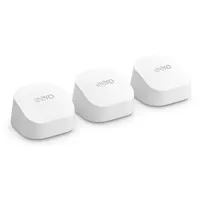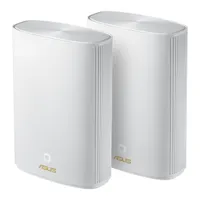TechRadar Verdict
It’s a little limited in terms of extra features, such as Ethernet ports and parental controls, but the Velop Pro 6E is competitively priced when compared to many mesh systems that support Wi-Fi 6E. It also doesn’t cut corners on performance, providing high-speed wi-fi throughout your home or office.
Pros
- +
Supports Wi-Fi 6E
- +
Good performance and range
- +
Competitively priced
Cons
- -
Might be overkill for the average home user
- -
Not many Ethernet ports
- -
Limited parental controls
Why you can trust TechRadar
Linksys Velop Pro 6E: One-minute review
It’s taken a while, but Wi-Fi 6E is finally becoming a mainstream technology that is now available in many new computers and mobile devices. Along with improved wi-fi speeds, the key advantage of Wi-Fi 6E is that it introduces a new 6.0GHz frequency band that works alongside the 2.4GHz and 5.0GHz bands used by previous generations, such as Wi-Fi 6 and Wi-Fi 5.
Needless to say, routers and mesh systems that support Wi-Fi 6E are still quite expensive, but the new Velop Pro 6E from Linksys is competitively priced and provides a number of options that allow you to tailor your new mesh system to suit your own particular home or office. But is it one of the best routers you can buy?
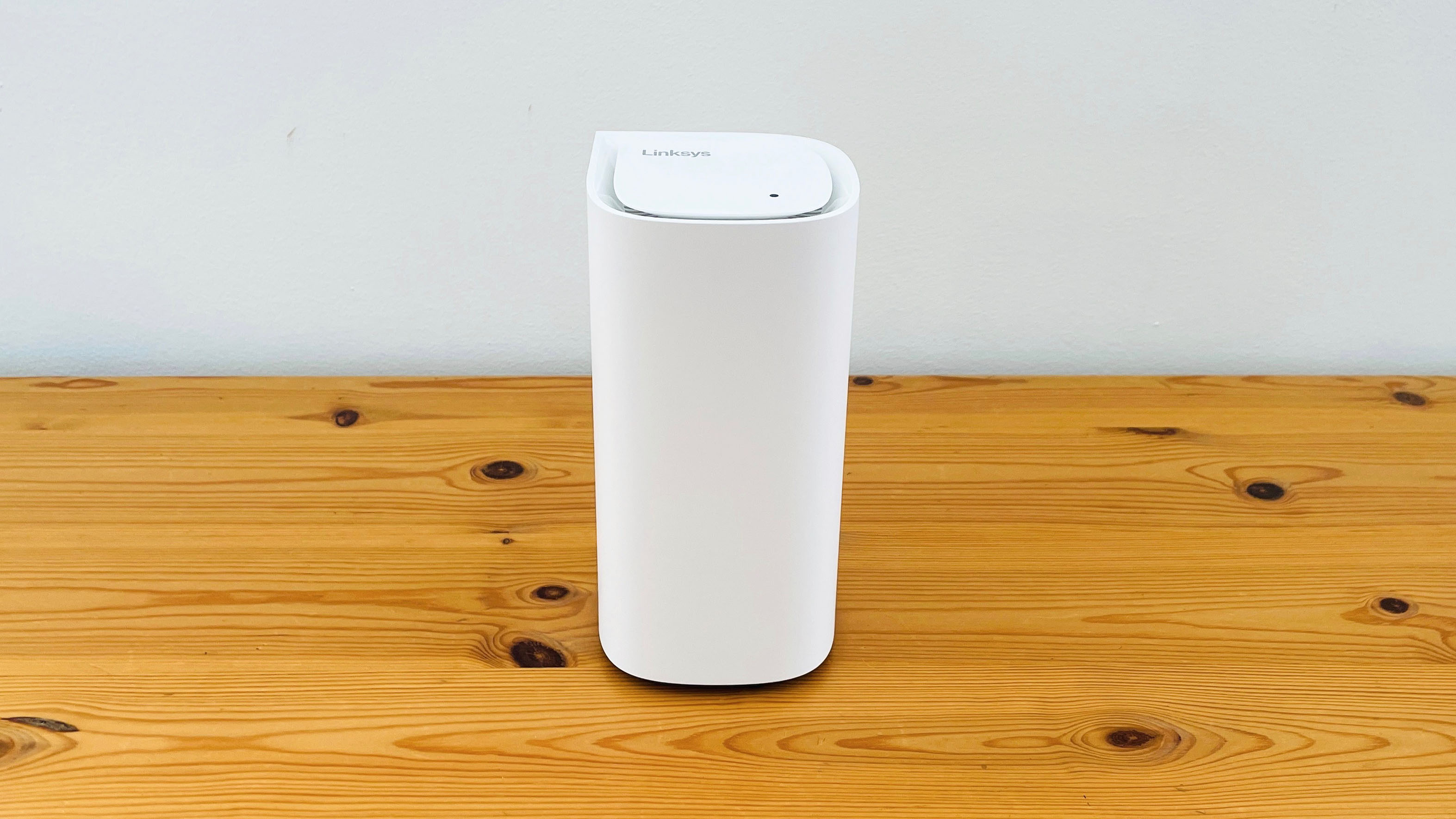
We tested the top-of-the-range mesh system, which includes three identical Velop routers, but you can also buy just one or two routers depending on the area that you need to cover. This also allows you to upgrade and extend your system by purchasing additional routers in the future if you need to.
And, as the ‘Pro’ name suggests, the new Velop provides high-end Wi-Fi 6E performance, with a top speed of 5.4Gbps that should be able to handle demanding tasks such as video-conferencing, streaming 4K video, and even the latest virtual-reality headsets.
Linksys Velop Pro 6E: Price & availability
- How much does it cost? Starts at $199.99 / £199.99 / around AU$310
- When is it available? Available now
- Where can you get it? Available in the US and UK
The Velop Pro 6E is competitively priced when compared to many Wi-Fi 6E systems and, as mentioned, you do have the option of buying one, two, or three routers depending on the size of your home or office.
Each router covers an area of approximately 3,000 square feet, and is capable of handling up to 200 devices connected to your network all at once. A single Velop router should therefore be perfectly adequate for many small and medium-sized homes, and costs $199.99/£199.99. Larger buildings may require a pack with two routers for $349.99/£379.99, while the three-pack system that we test here costs $449.99/£499.99.
The Velop Pro 6E is now on sale in the US and UK, but isn’t currently available in Australia (which seems oddly bereft of Wi-Fi 6E routers in general, for some reason).
Sign up for breaking news, reviews, opinion, top tech deals, and more.
- Value: 4 / 5
Linksys Velop Pro 6E: Specs
| Wi-Fi: | Tri-band Wi-Fi 6E (2.4GHz/5.0GHz/6.0GHz) |
| Speed: | 5.4 Gbps |
| Connectivity: | 1x Gigabit Ethernet (WAN),1x Gigabit Ethernet (LAN), |
| Processor: | Qualcomm dual-core @ 1.0GHz |
| Memory | 512MB |
| Storage: | Not specified |
| Dimensions: | 194 x 95 x 99mm, 0.67kg |
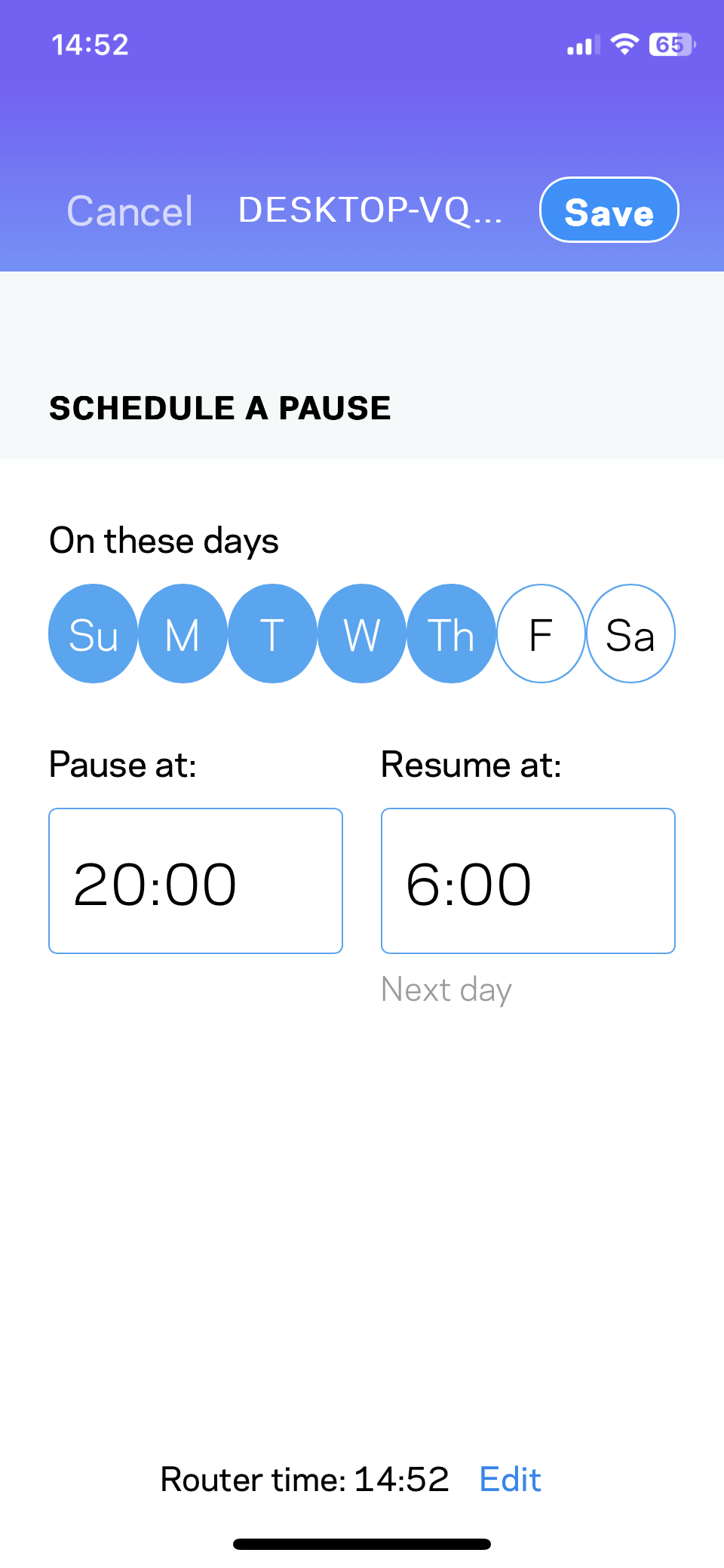
Linksys Velop Pro 6E: Design
- Fairly large, but not heavy
- Only one Ethernet port per unit
- Decent companion app with simple single-band option
Linksys seems quite proud of the ‘droplet’ design that gives the top panel of the Velop routers a slightly tapered shape, rather than sticking with a boring old rectangle. It’s a very subtle detail though, and if you look across the room at the Velop routers they do still look like a large, upright rectangular lump of white plastic. Each router stands 194mm high and close to 100mm on each side, so you’ll need a shelf or table with a fair amount of space to set each one up.
The power and reset buttons are tucked away on the base of each router, and the only other visible features are the two Gigabit Ethernet ports on the back panel. However, one of these ports is reserved for connecting the Velop to your existing broadband router or modem, which means that there’s only one Ethernet port available to provide wired connections for devices such as a laptop or games console. That’s a little disappointing for an expensive, high-performance mesh system such as this - two or three Ethernet ports are more common on some of the Velop’s rivals - but it may not be a deal-breaker if you’re primarily interested in using the Velop simply to boost your wi-fi performance.
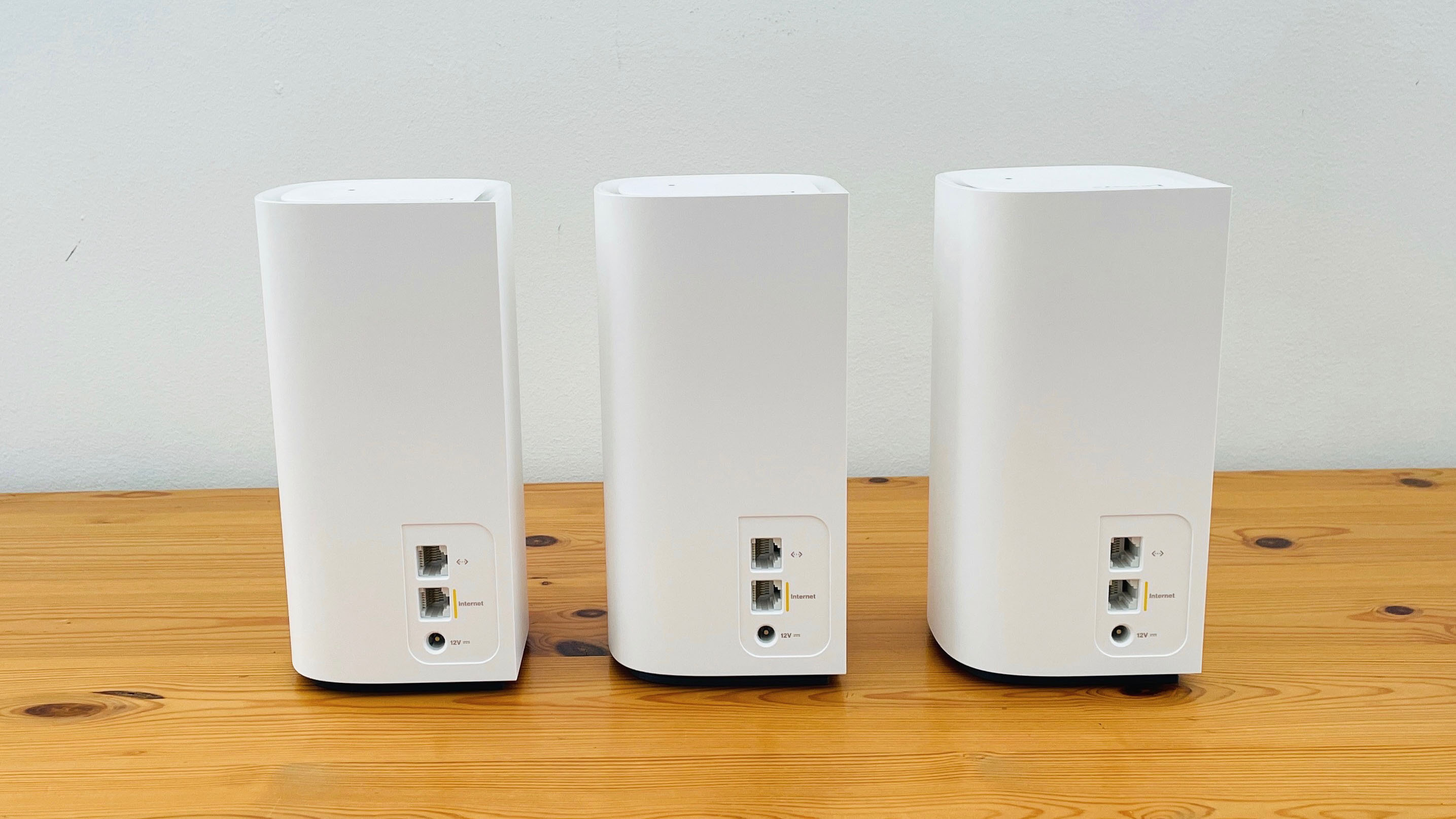
The Linksys app takes an equally minimalist approach. It includes basic features such as the ability to create a guest network or prioritize devices such as a games console for maximum performance. You can also set a schedule for Internet access for your children, but it’s disappointing that there are no content filters that can automatically block websites that contain unsuitable material, and the app simply leaves it up to you to manually type in the addresses of any web sites that you want to block.
The app also sets up a single network that merges the 2.4GHz, 5.0GHz, and 6.0GHz frequency bands. That keeps things simple for less experienced users who may not know very much about networking technology, but more advanced users might prefer it if the app provided more detailed control over the network settings during the initial set-up process.
- Design: 4 / 5
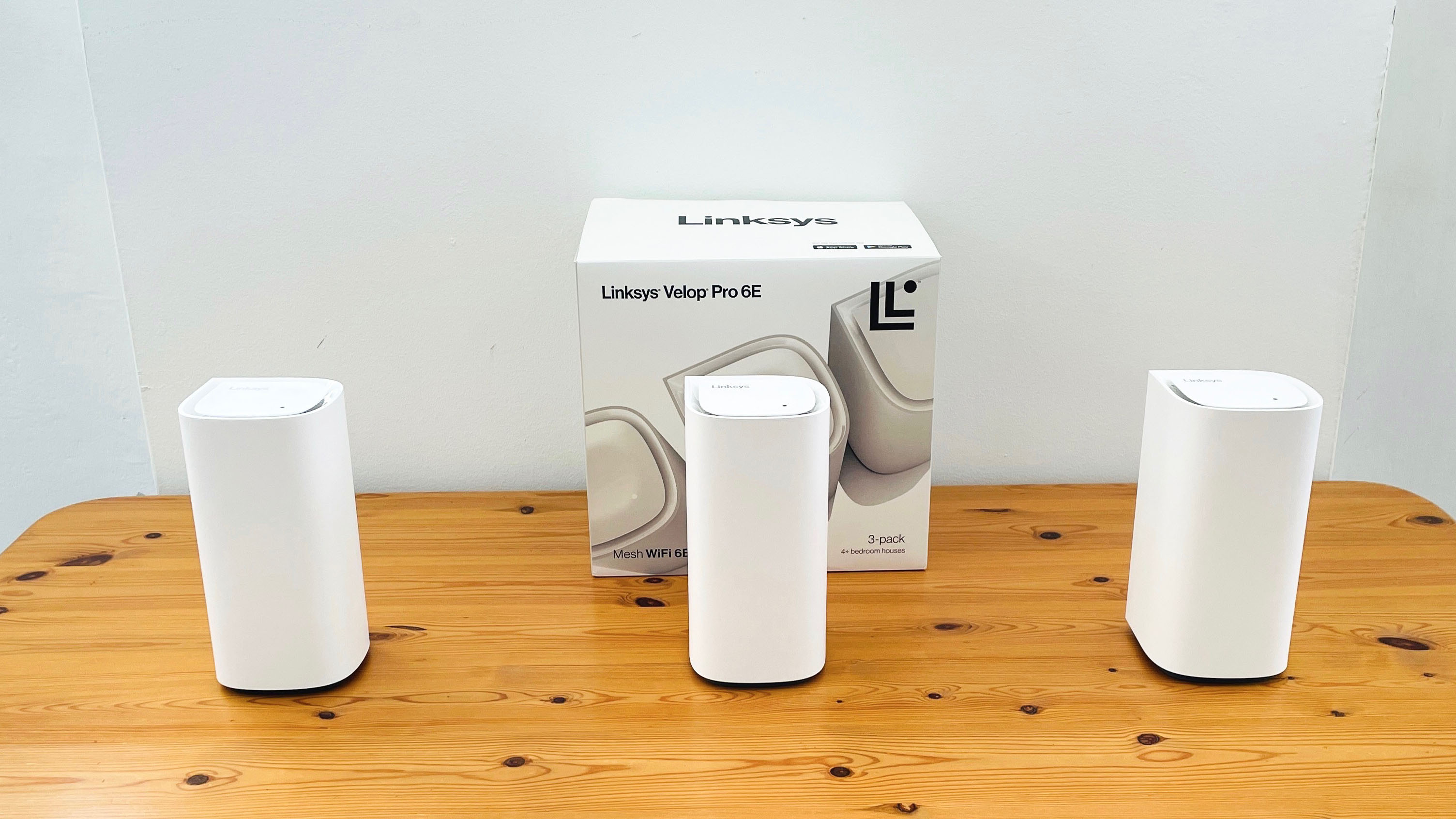
Linksys Velop Pro 6E: Performance
- Stellar connection quality
- Good penetration inside buildings
- Satellites allow for wide-range use
Getting started with the Velop Pro 6E is fairly straightforward, although you do need to follow the instructions in the Linksys app very closely. The app is available for iOS and Android, and uses Bluetooth to initially connect to the Velop routers and set up your new network.
The first Velop router has to be connected to your existing router or modem using the included Ethernet cable in order to use your broadband connection. The other two routers - which are referred to as ‘nodes’ - have to be set up and powered on within 10ft of the first router. We initially placed the two node routers slightly further away - simply because that was the closest available power socket - and the app simply failed to detect the additional nodes. We had to go searching for an extension lead so that we could move the two nodes closer to the main Velop router in order to complete the set-up process.
Ookla Speed Test (download/upload)
Within 5ft, no obstructions: 150/150Mbps
Within 30ft, three partition walls: 150/150Mbps
20GB Steam download
Within 5ft, no obstructions: 150Mbps
Within 30ft, three partition walls: 150Mbps
Thankfully, though, the Velop system performed admirably once it was set up. We do have an office towards the back of our building where we have to use PowerLine adaptors to provide a wired network connection as the wi-fi signal from our normal router is so weak. We therefore placed one of the nodes halfway along a hallway that leads to that back office, while the second node was placed in the office itself.
Using a laptop that supported Wi-Fi 6E, we were impressed to find that the Ookla Speed Test app reported a consistent 150Mbps download speed for our laptop, which is the maximum speed provided by our office broadband. That was confirmed when using Steam to download some games onto the laptop, which again ran smoothly at 150Mbps the whole time. It's comfortably fast enough to sit among the best mesh Wi-Fi systems.
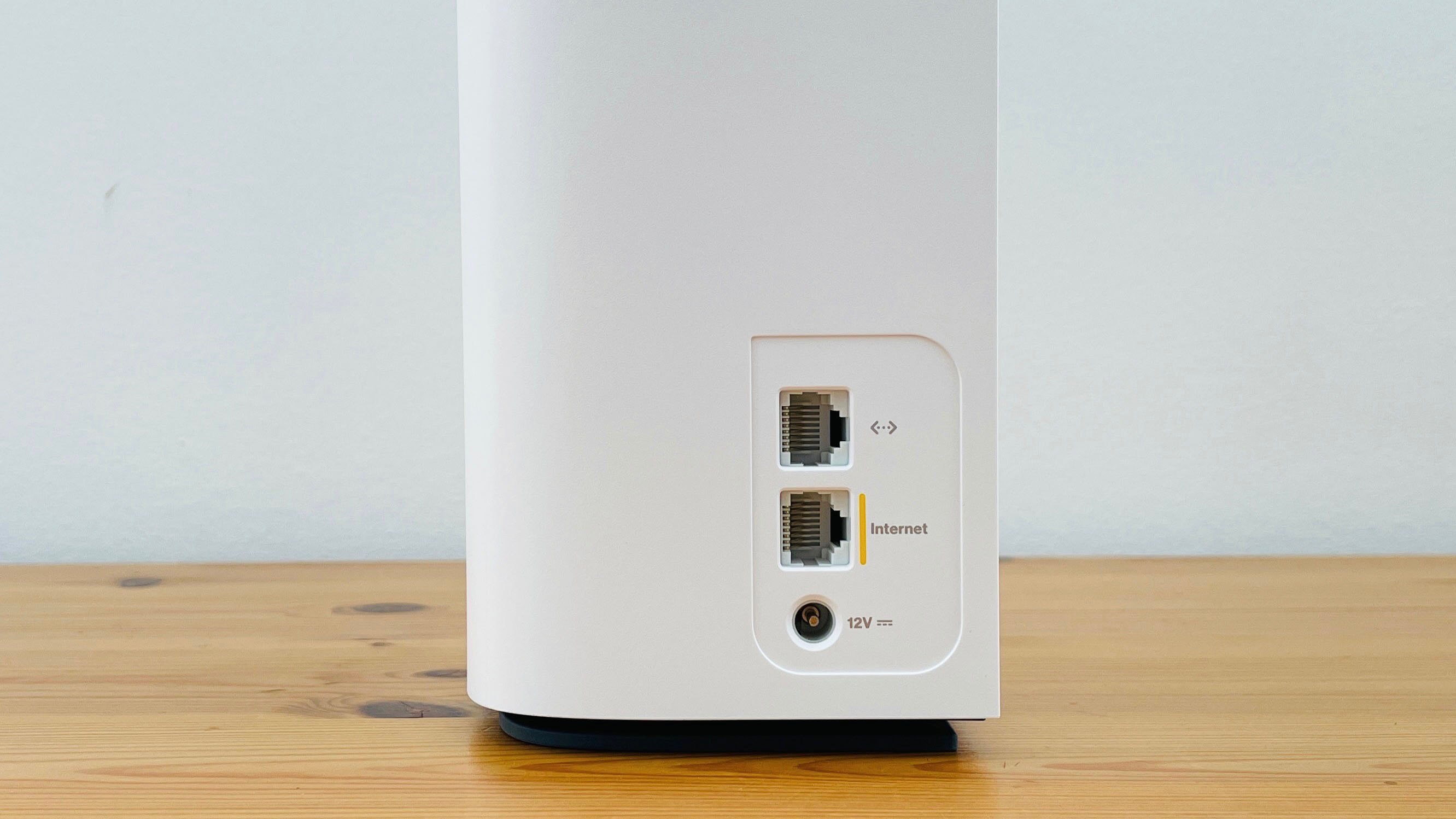
You don’t have to buy a brand new PC with Wi-Fi 6E to get those speeds either, as we also tested an older MacBook Air that only has Wi-Fi 6, and the MacBook also recorded the same 150Mbps download speeds in that office as well. Of course, not everyone will need a state-of-the-art mesh system with Wi-Fi 6E right now, but if you do have any new PCs or mobile devices that support 6E then the Velop is a good way of upgrading your home or office network with the latest wi-fi tech.
- Performance: 5 / 5
Should you buy the Linksys Velop Pro 6E?
| Value | Wi-Fi 6E is still fairly new, but the Velop Pro 6E is competitively priced when compared to many similar mesh systems | 4 / 5 |
| Design | It’s all very minimalist - both in in terms of hardware design and the features provided by the Linksys app. That’s good for first-time users, but more experienced users might require a few additional features. | 4 / 5 |
| Performance | It's a little feature-light, but the Velop Pro 6E provides strong, reliable wi-fi performance that can cover your entire home or office. | 5 / 5 |
| Final Score | Some people might require additional features - such as extra Ethernet ports or parental controls - but the Velop Pro 6E gets the basics right, with strong performance and the latest wi-fi tech at a competitive price. | 4.5 / 5 |
Buy it if...
You Have A Lot Of Gadgets
As well as being seriously fast, Wi-Fi 6E is also designed to handle networks with dozens - or even hundreds - of connected devices. Each Velop router can cope with 200 connected devices all at once.
You Have A Lot Of Bedrooms
Linksys states that each Velop Pro 6E router can cover an area of up to 3,00sq.ft, so it’s ideal for larger homes with lots of bedrooms on multiple floors.
Don't buy it if...
You’re On A Budget
It’s still quite new, so routers with Wi-Fi 6E are fairly expensive. Although the Velop Pro 6E is competitively priced, most homes will be able to get buy with a less expensive with a less expensive router or mesh system that uses the slightly older Wi-Fi 6 standard.
You only need basic performance
The Velop Pro 6E provides tri-band wi-fi with a top speed of 5.4Gbps per second, which is far faster than most domestic broadband services. Routine tasks like web browsing or streaming music and video really don’t need that sort of speed.
Linksys Velop Pro 6E: Also consider
| Linksys Velop Pro 6E | Eero 6+ | Asus ZenWiFi AX Hybrid XP4 | |
|---|---|---|---|
| Price: | From $199.99 / £199.99 / around AU$310 | $399.99 / £299.99 / AU$599.99 | $329.99 / £269.99 / around AU$515 |
| Wi-Fi: | Tri-band Wi-Fi 6E | Dual-band Wi-Fi 6 | Dual-band Wi-Fi 6 |
| Speed: | 5.4 Gbps | 3.0 Gbps | 1.8 Gbps |
| Connectivity: | 1x Gigabit Ethernet (WAN), 1x Gigabit Ethernet (LAN) | 2x Gigabit Ethernet (WAN/LAN) | 1x Gigabit Ethernet (WAN), 2x Gigabit Ethernet (LAN) |
| Processor: | Qualcomm dual-core @ 1.0GHz | Dual-core @ 1.0GHz | Row 4 - Cell 3 |
| Memory: | 512MB | 512MB | 512MB |
| Storage: | Not specified | 4GB | 256MB |
| Dimensions: | 194 x 95 x 99mm | 66 x 97 x 99.4mm | 210 x 150 x 70mm |
Eero 6+
Owned by Amazon, the Eero range provides modest performance, with the Eero 6+ only supporting Wi-Fi 6 with a top speed of 3.0Gbps. It’s competitively priced, though, and very easy to set up and use.
Read our full Eero 6+ review
Asus ZenWiFi AX Hybrid XP4
It’s expensive - even for a simple two-piece kit - but the XP4 combines mesh wi-fi with PowerLine connectivity that can break through even the worst wi-fi dead zones.
Read our full Asus ZenWiFi AX Hybrid XP4 review
How I tested the Linksys Velop Pro 6E
- Tested it for 3-4 days
- Used it as our main office router
- Used the Ookla Speed Test app and tested game download speeds
We pride ourselves on our independence and our rigorous review-testing process, offering up long-term attention to the products we review and making sure our reviews are updated and maintained - regardless of when a device was released, if you can still buy it, it's on our radar.
First reviewed April 2024
Cliff Joseph is a former Editor of MacUser magazine, and a freelance technology writer with 30 year’s experience in the industry (and old enough to remember when Apple was close to going bust…).
His first job involved using Macs for magazine sub-editing and typesetting, which led to the realisation that these computer-thingies might actually turn out to be useful after all. After a few years specialising in the Mac side of the market, he went freelance and embraced the wide world of digital technology, including Windows PCs, digital audio and hi-fi, and networking. Somewhere along the line he also developed a bit of a gaming habit and has stubbornly waved the flag for Mac gaming for far too many years.

